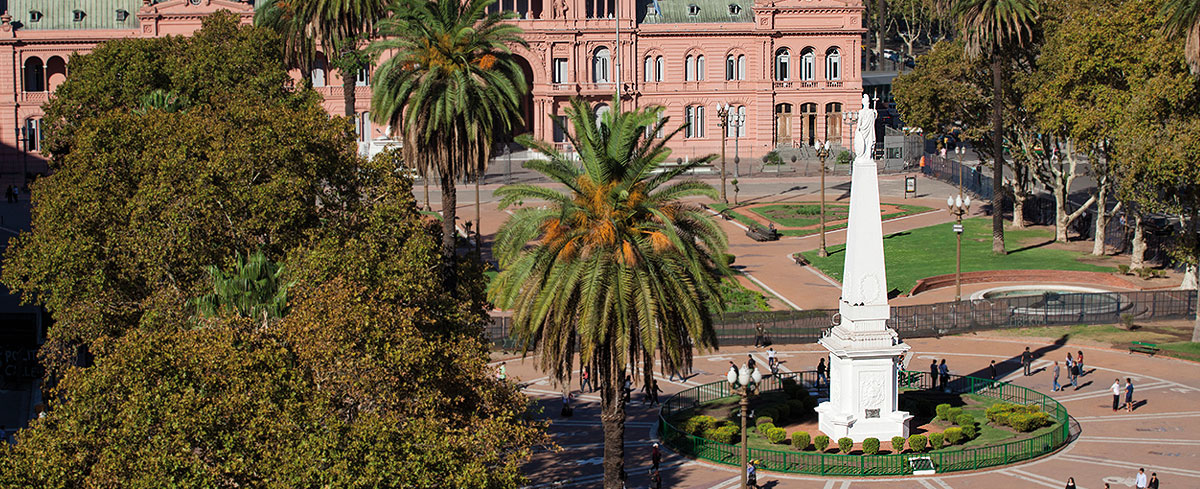12 noon | Head to Plaza de Mayo
Present in tours
Time to walk the city's most famous street. Avenida de Mayo runs from the National Congress building to the Plaza de Mayo, site of the governmental palace, the Casa Rosada. Its European style can be credited to the city's first mayor Torcuato de Alvear, who wanted to build a boulevard like the ones he had seen in Paris.
In little more than 10 blocks, you'll pass several sites of historic importance. After plaza del Congreso, head along Avenida de Mayo, passing La Inmobiliaria, a building that boasts one of the city's most famous domes, and Palacio Barolo, an impressive Art Nouveau office block whose architecture contains symbolic references to Dante's Divine Comedy.
If you're feeling hungry, take a moment to grab a hot garrapiñada (caramelised peanuts) from one of the street stalls, or save yourself for Café Tortoni, the bar notable par excellance. This, the city's oldest café, has a certain mystique thanks to its association with tango and with writers such as Federico Garcia Lorca and Jorge Luis Borges, and has superbly preserved interiors.
After stopping here, a little further along Avenida de Mayo, you'll reach Calle Florida, a pedestrianised street famous for its shops and architectural gems like Galería Güemes and Galerías Pacífico. There's also Pasaje Roverano, where you can find Pope Francis's favourite hairdressers, Peluquería Romano.
At the end of Avenida de Mayo, you'll find yourself in Plaza de Mayo, the stage for many defining moments of Argentina's history, from the foundation of the city to the formation of the first independent national government, through to the square's bombing during the military uprising of 1955, the demonstrations by the mothers of the Plaza de Mayo, the announcement of the Malvinas war and the assumption of presidents.
On one side of the square is the easily recognisable Casa Rosada (pink house), which houses the executive branch of the government. Opposite is the Cabildo, a colonial-style building that housed the former city government and is now preserved as a museum, though some of the building was demolished to make way for Avenida de Mayo. On another side of the square, you'll find the Catedral Metropolitana, the Catholic Church's most important site in Argentina.
In the centre of the square is the Pirámide de Mayo, a pyramid that supports a figure representing liberty. It was erected in 1910 to mark the centenary of the May revolution that began Argentina's road to independence from Spain. During Argentina's last military dictatorship, the Mothers of the Plaza de Mayo began marching around the pyramid to demand information about their missing children.
Guided tours:
-The city tourist board offers walking tours of the Plaza de Mayo every Monday, at 11am in English and 3pm in Spanish.
To continue our itinerary
Take bus number 111 in Plaza de Mayo and hop off when you reach Av. Alicia Moreau de Justo, in the next neighbourhood on our tour.

